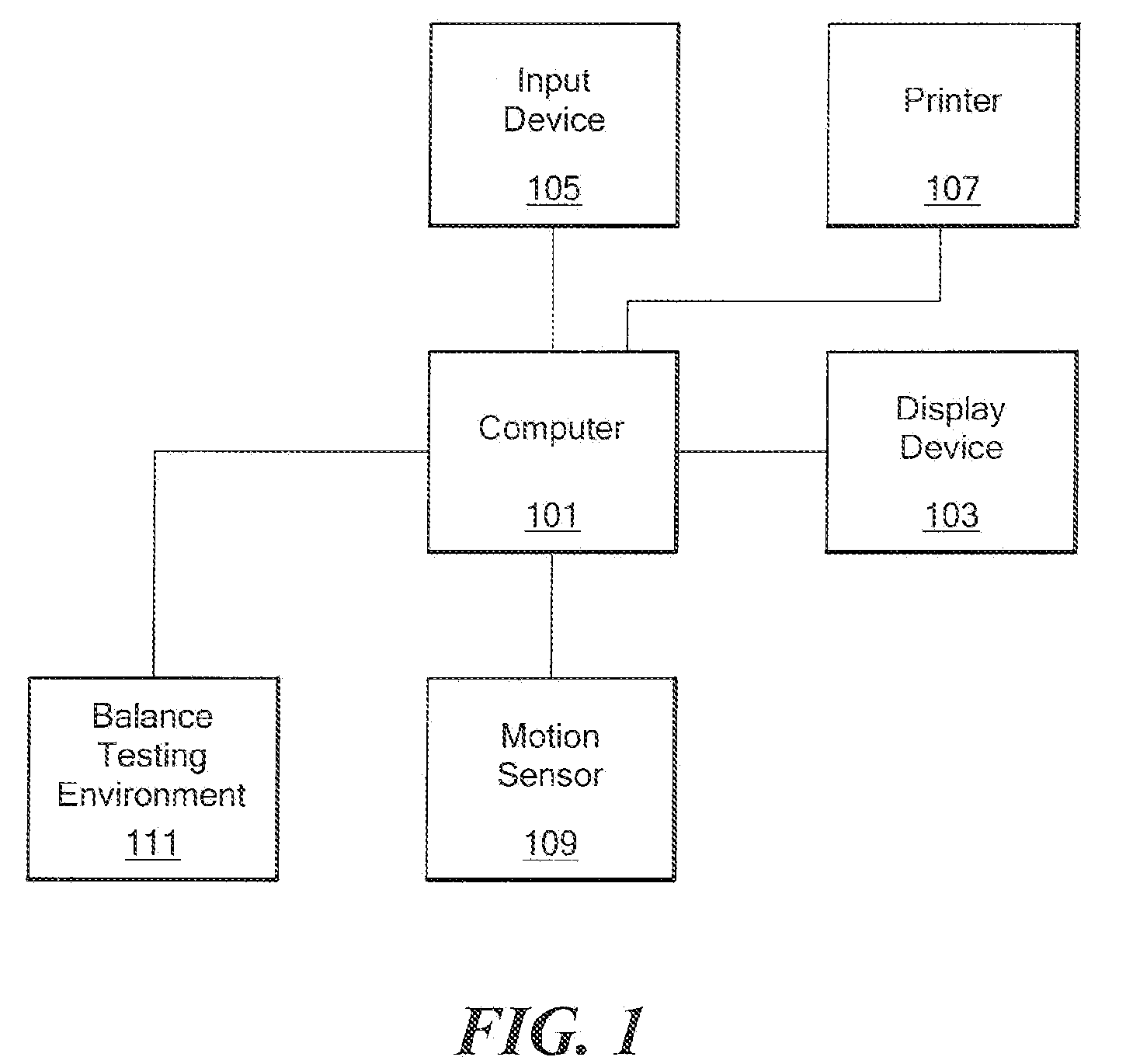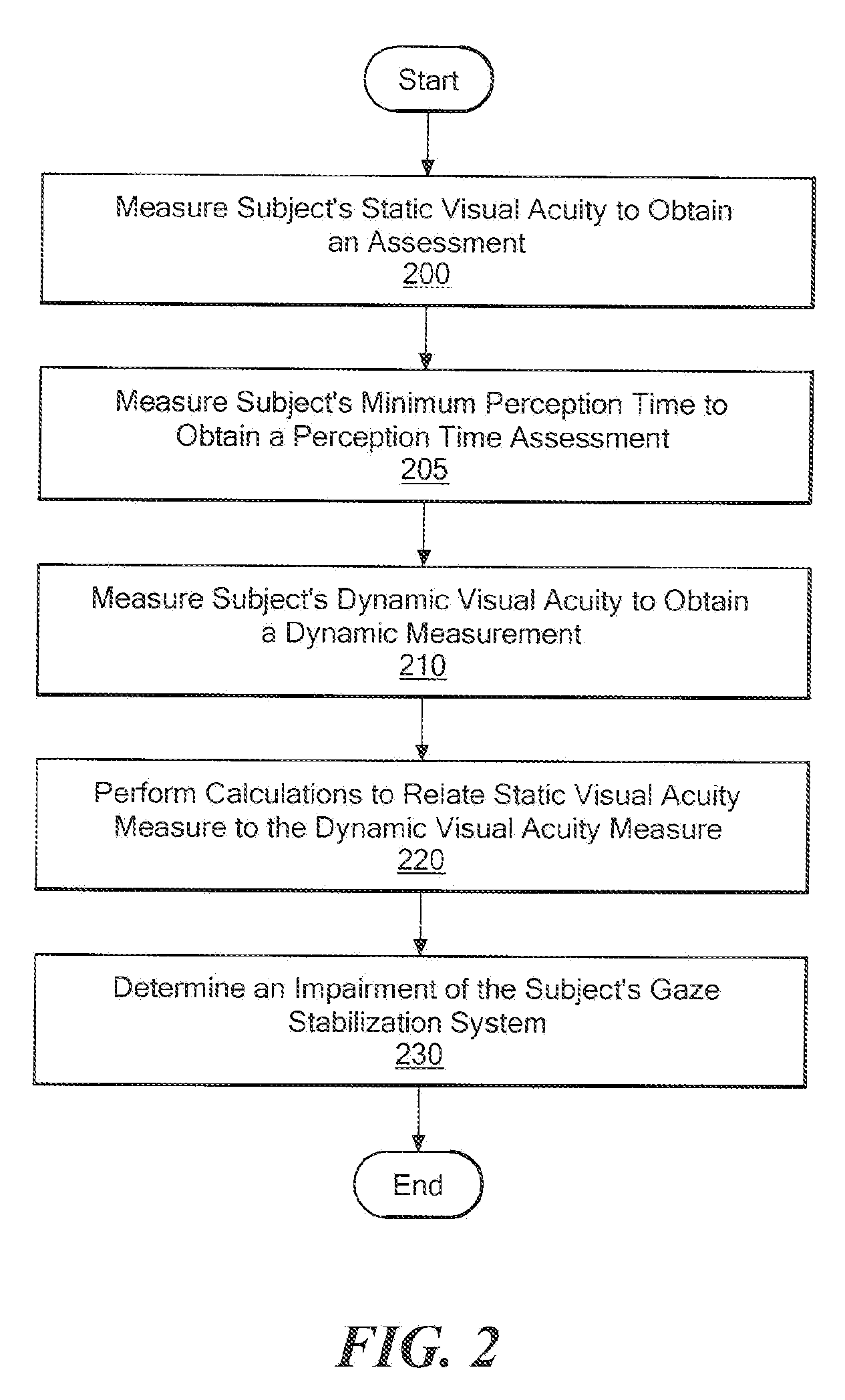Diagnosing and Training the Gaze Stabilization System
a stabilization system and gaze technology, applied in diagnostics, medical science, diagnostic recording/measuring, etc., can solve the problems of blurred objects, blurred objects, and often fully resolved pathological manifestations of balance problems, so as to stabilize the gaze of a subject, accurately perceive fixed visual targets, and reliable isolation of individual eye movement control systems
- Summary
- Abstract
- Description
- Claims
- Application Information
AI Technical Summary
Benefits of technology
Problems solved by technology
Method used
Image
Examples
Embodiment Construction
[0032] The visual system requires a minimum time to process and accurately perceive a visual image once it has been stabilized on the fovea. In healthy adult subjects this time varies between approximately 25-50 milliseconds. In elderly individuals or individuals with brain injuries affecting areas involved in visual processing, the minimum perception time may increase to 100 milliseconds or more.
[0033] The VOR system is a fast acting system that rotates the eyes in equal and opposite directions in relation to the rotations of the head. Movements can be initiated within 10 milliseconds of the onset of head movement, much earlier than either saccadic or smooth pursuit movements. However, because eye movements are driven by inputs from the semicircular canals of the vestibular system, they can stabilize a visual object on the fovea only when the head undergoes a rotational movement relative to a fixed visual object. Performance of this control system is further limited by the inabili...
PUM
 Login to View More
Login to View More Abstract
Description
Claims
Application Information
 Login to View More
Login to View More - R&D
- Intellectual Property
- Life Sciences
- Materials
- Tech Scout
- Unparalleled Data Quality
- Higher Quality Content
- 60% Fewer Hallucinations
Browse by: Latest US Patents, China's latest patents, Technical Efficacy Thesaurus, Application Domain, Technology Topic, Popular Technical Reports.
© 2025 PatSnap. All rights reserved.Legal|Privacy policy|Modern Slavery Act Transparency Statement|Sitemap|About US| Contact US: help@patsnap.com



